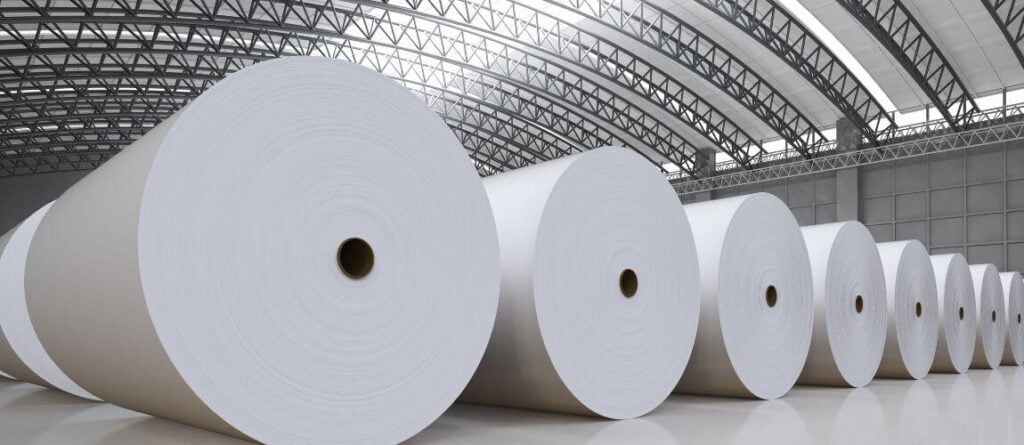The pulp and paper sector is a significant global industry. However, it also has an enormous environmental impact, requiring vast energy and water resources to produce paper products. Oxygen generators can help address some of these challenges by providing a reliable source of oxygen to support bleaching and delignification processes.
Improve Paper Products Quality with Oxygen Generator
One of the major challenges in the pulp and paper industry is maintaining the quality of paper products. Oxygen generators can help improve product quality by increasing oxygen levels during different stages of production. This technology eliminates the need for using hazardous chemicals, reducing costs and making it an eco-friendly solution.
Oxygen generation equipment can also improve bleaching processes, leading to brighter and whiter paper products with better surface properties. When oxygen flows into the bleaching process, it helps to remove lignin and other impurities that could harm the strength of the fibers. Oxygen delignification allows for greater fiber flexibility, resulting in firmer, brighter, and cleaner paper products.
In addition, oxygen generators can help reduce drying times, which is crucial in large-scale production environments where time and energy are valuable resources.
Protect Environment
The pulp and paper industry has developed rapidly, but behind its rapid development, it also faces practical problems such as high water consumption and severe environmental pollution.
A widely used technical solution known as oxygen bleaching is employed to address the environmental pollution caused by the papermaking industry. This method uses oxygen to improve pulp yield and reduce the consumption of other chemicals, effectively reducing the BOD, COD chromaticity, and total organic chlorine content in bleaching wastewater, thereby reducing environmental pollution caused by pulp bleaching wastewater.
Use VPSA Oxygen Generator for Pulp and Paper
Initially, small-scale cryogenic air separation equipment was utilized as the source of oxygen by paper mills. However, this technology had its own set of limitations, including high energy consumption, inconvenient usage, difficult maintenance, and high costs. Although the cryogenic equipment provided a resolution for oxygen consumption, it could not overcome the hurdles of cost and convenience.
With the development of air separation technology, vacuum pressure swing adsorption(VPSA) oxygen production technology has begun to enter people’s vision. This technology possesses several remarkable features, such as producing pure oxygen with a significantly lower energy consumption of merely one-third that of the cryogenic air separation method. Moreover, the VPSA oxygen production method can initiate and terminate production at any given time, enabling swift oxygen output. This method minimizes oxygen consumption while simultaneously facilitating usage.
Furthermore, the VPSA oxygen production method has several benefits:
- The VPSA oxygen production device boasts a simple process, exhibits reliable quality, and operates steadily.
- The infrastructure prerequisites are relatively low, eliminating the need for substantial infrastructure expenses and reducing the construction period.
- It is entirely automated and convenient to operate, permitting flexibility in commencing and discontinuing production.
- It guarantees low energy consumption, minimal upkeep costs, and reduced operational expenses.
- The system operates with low noise, thereby being environmentally friendly.
As a result, paper manufacturers have gradually developed a preference for VPSA oxygen generators.
Cost Effective
Using oxygen generators in the pulp and paper industry is a cost-effective solution to the challenges of producing high-quality paper. Oxygen is essential in the bleaching process that removes lignin, hemicellulose, and other impurities from wood pulp. Traditionally, mills have relied on expensive liquid oxygen supplies or cryogenic air separation plants to meet their oxygen needs. However, these solutions are costly and can be challenging to maintain.
On-site oxygen generators provide a more efficient and cost-effective solution for paper mills. By using pressure swing adsorption (PSA) technology, these generators can produce high-purity oxygen on demand without requiring bulky cryogenic tanks or extensive gas storage facilities. This means that mills can produce as much oxygen as needed at any given time, reducing waste and saving money.
In addition to lower operating costs, on-site oxygen generators offer increased safety benefits over traditional supply methods. By eliminating the need for transporting large quantities of hazardous materials such as liquid nitrogen or compressed gas cylinders, mills reduce the risks associated with potential accidents during transporting and handling of those materials.
Conclusion
In conclusion, using oxygen generators in the pulp and paper industry is a viable option for improving production efficiency while minimizing environmental impact. The use of these oxygen generators eliminates the need for transportation and storage of liquid oxygen or cylinders, which reduces carbon footprint. Additionally, the on-site production of oxygen ensures a stable supply that can be adjusted to meet varying demands.
Furthermore, oxygen generators offer an efficient way to increase pulp yield while reducing bleaching chemicals used in papermaking. The process also improves wastewater treatment by promoting faster breakdown of organic matter without the need for additional chemicals. This means less pollution discharged into waterways and reduced costs associated with disposal.
Overall, investing in an oxygen generator is a smart choice for companies in the pulp and paper industry looking to improve their operations while also reducing their environmental impact. With its numerous benefits and advantages over traditional methods, it’s easy to see why more businesses are switching to this innovative technology.
Contact OxyNitra today to learn more about how our custom-built oxygen generation systems can meet your unique manufacturing needs!

